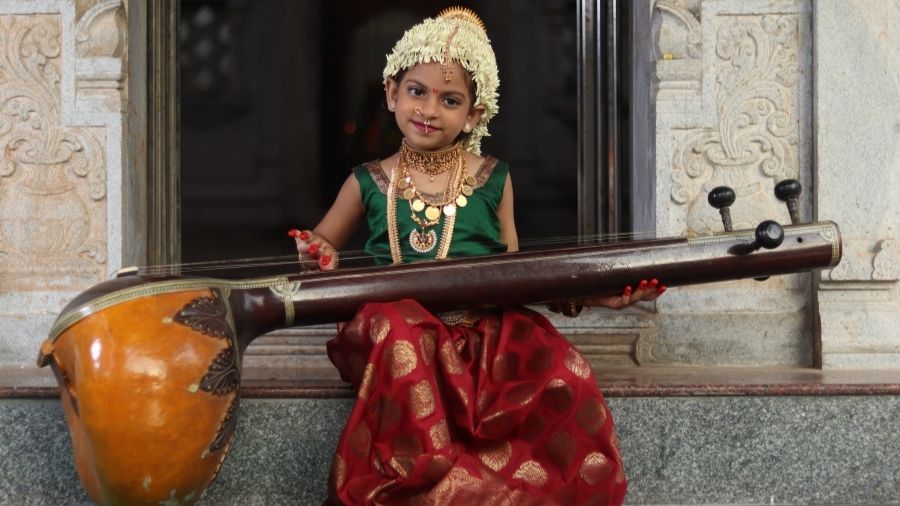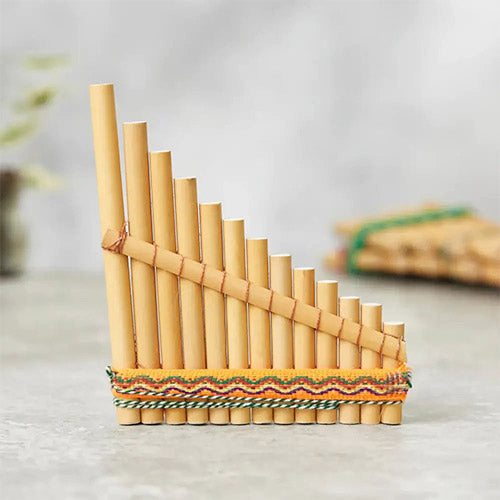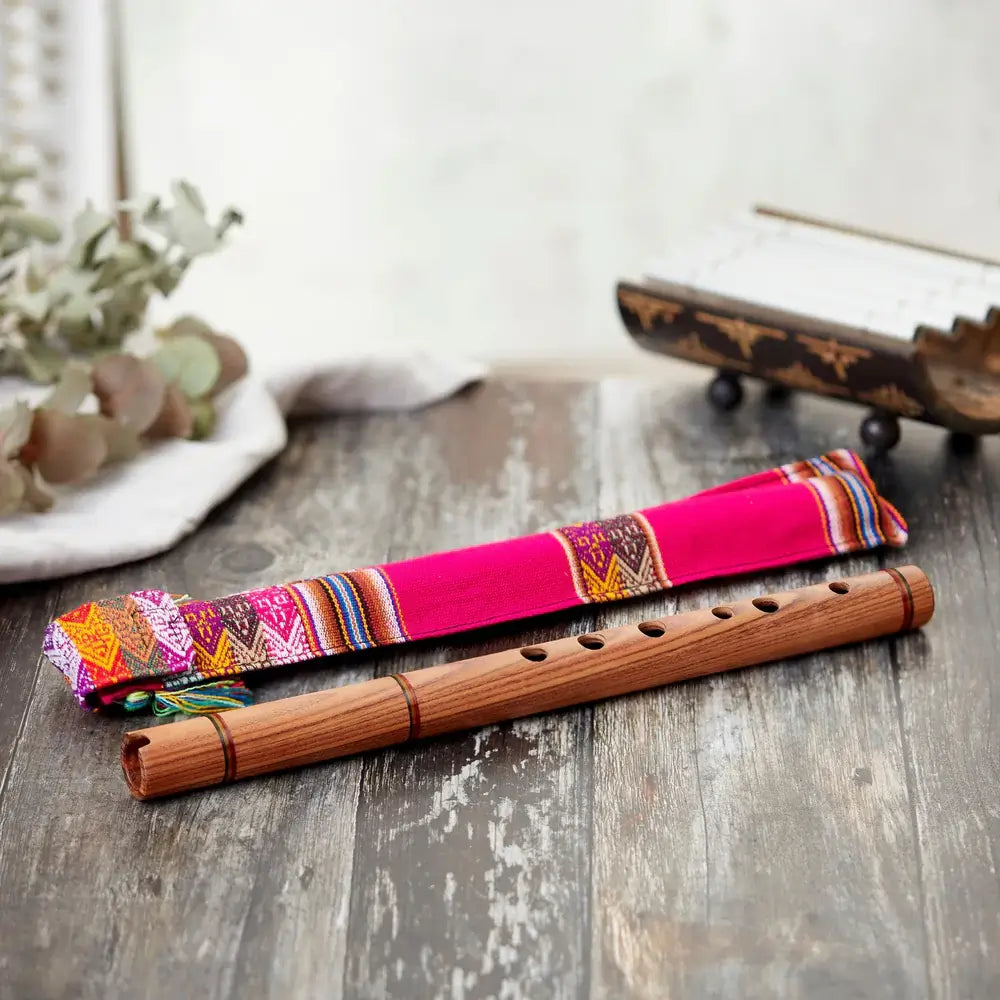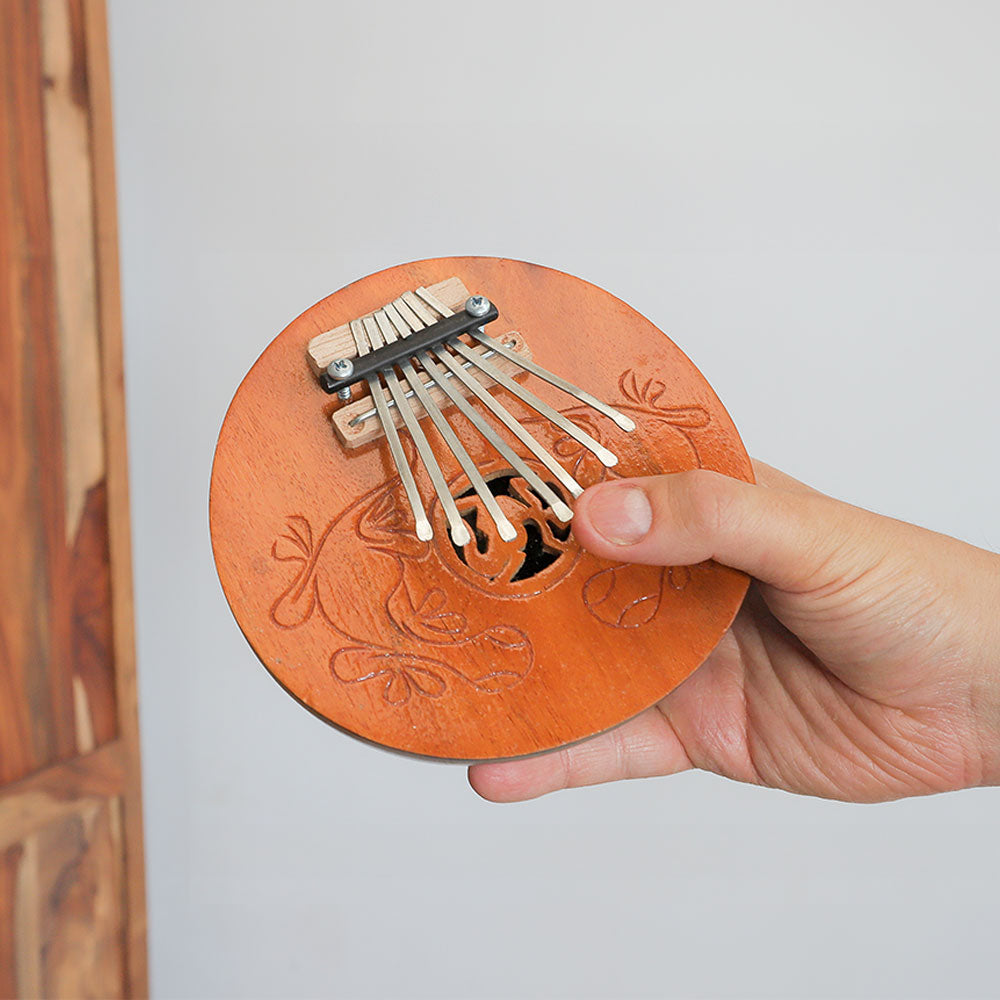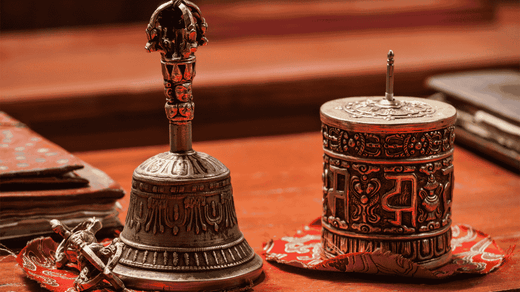Lets discover famous musical instruments that have been used in temples for rituals and relgiious ceremonies. These instruments are traditionally used in Hinduism and Budhism. They are used as spiritual tools to enhance the environment and in some cases are used for chants and dance. We have curated this guide of sacred instruments that are usually found in Indian temples.
Tavil (or Thavil)

This instrument is a large cylindrical drum, typically played with sticks. It is traditionally used in South Indian temples, especially in Tamil Nadu and Kerala. It is a barrel-shaped percussion instrument from Tamil Nadu. It is also widely used in other South Indian states (Andhra Pradesh, Karnataka, Kerala, Telangana) and the North and East of Sri Lanka (in the Tamil-majority area called Tamil Eelam). A famous Indian musician and percussionist is Valayapatti A. R. Subramaniam who uses the Thavil which is also known as the dolu in carnatic music. The instrument accompanies windpipe instruments such as Nadaswaram, saxophone, and the clarinet.
Nadaswaram

The Nadaswaram is a large wind instrument, often considered one of the oldest and most sacred instruments in South India. It is a double-reed instrument made of wood or sometimes bamboo. This Nadaswaram is a wind instrument made of wood and metal and is found in both classical and folk traditions in South India. The name comes from "Nada", or pleasing sound, and "Swaram" means note.
The Nadaswaram is traditionally played at the temple entrance or during processions to mark the arrival of the divine. Its powerful, divine sound enhances the spiritual energy of the sacred space.
Mridangam

This ancient percussion instrument originates from the Indian subcontinent. It serves as the main rhythmic support in Carnatic music ensembles. In the Dhrupad tradition, its counterpart—the pakhawaj—takes on this role. A similar instrument, the Kendang, is found in the traditional music of Maritime Southeast Asia.
The Mridangam is a two-headed drum widely used in classical Indian music, particularly Carnatic (South Indian) music. It has a symmetrical shape and is usually made from wood. The deep, rhythmic tones produced by the Mridangam are believed to have a purifying effect, and the instrument is used during temple festivals and pujas.
Bell (Ghanta)

The bell is traditionally crafted from a blend of five to seven sacred metals, each associated with a celestial body: lead (Saturn), tin (Jupiter), iron (Mars), copper (Venus), mercury (Mercury), silver (the Moon), and gold (the Sun). These materials enhance the bell's spiritual resonance and symbolic significance.
A clapper is attached to the inside, and the bell sounds high-pitched when rung. Bells are commonly found in Hindu, Buddhist, and Jain temples. The temple bell is often rung during prayer, rituals, and processions. The sound of the bell is considered auspicious, and its resonating tone is believed to purify the surrounding environment, signaling the start of rituals and invoking divine presence.
Shankha (Conch Shell)

The Shankha is a conch shell blown during temple rituals and ceremonies. The sound produced is considered divine and auspicious. The deep, conch-like sound is believed to drive away evil and bring divine energy. A shankha shell (the shell of a T. pyrum, a species in the gastropod family Turbinellidae) is often referred to in the West as a conch shell or a chank shell. This shell is used as an essential ritual object in Hinduism.
Shell trumpets are ceremonial trumpets used in religious practices, such as puja. They are among the oldest wind instruments, with origins in ancient cultures across Oceania, Asia, Europe, and the Americas. Conch shells, in particular, were valued for their sound and as symbols of fertility, good fortune, the infinite, and the interconnectedness of life.
Veena

The Veena is a stringed instrument commonly used in South Indian classical music. Several types of veenas exist, but the Saraswati Veena is most often associated with temple music. It remains an essential and popular string instrument in classical Carnatic music.
It can produce pitches in a full three-octave range as a fretted, plucked lute. The long, hollow neck design of these Indian instruments allows portamento effects and legato ornaments found in Indian ragas. The Saraswati Veena, often played in temples, is dedicated to the goddess Saraswati, symbolizing wisdom and knowledge. Its sweet, resonating tones are considered to carry prayers directly to the divine.
Tabla Drums

This instrument is a pair of hand-played drums originating in North India and is central to Hindustani classical music. Since the 18th century, it has served as a primary percussion instrument, used in solo performances, as accompaniment for vocals and instruments, and in ensemble settings.
In temple traditions, particularly in northern regions, the tabla often accompanies devotional music. Its complex rhythms enhance spiritual expression and help worshippers connect more deeply with the divine.
Tanpura (Tambura)

This long-necked stringed instrument produces a continuous drone that supports and sustains the melody in Indian classical music. It does not play melody or rhythm but provides a sustained tonal backdrop that helps define the raga being performed. By the late 16th century, the tanpura had taken on its modern form, as seen in Mughal miniature paintings.

